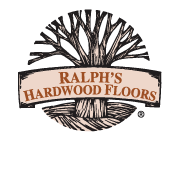As a pet lover and proud owner of Kira and Charlie, I have a soft spot in my heart for homeowners who visit our showroom and are anxious about their indoor dogs or cats.
They love the beauty of hardwood floors, but not as much as their pets! They’re concerned that their dream of beautiful hardwood flooring is impractical because of their furry loved ones.
I tell them to relax, that I know how they feel. If hardwood floors and my dogs couldn’t coexist, then I wouldn’t have hardwood floors either—but I do!

While every situation is different—largely depending on personal taste and the type of pets—here are 10 general tips for homeowners who want hardwood floors but also want to share them with their “best friends.”
1. Keep pet nails trimmed.
Scratches are a primary concern when allowing dogs on hardwood floors. That’s less so with cats, because they don’t usually walk with their claws out, but they can still damage floors when rough housing and chasing.
The obvious way to minimize this damage is to keep the nails of your pets trimmed, which is also healthy for them. (Yes, even cats can have their nails trimmed.)
2. Use a hard species of wood.
The harder the wood, the more it will resist damage by pet nails. (If the wood is too soft, big dogs can even dent it while running through the house.)
3. Consider a light to medium color.
Light to medium-colored hardwood floors generally show scratches, hair, and dander less than dark flooring.
4. Avoid glossy floors.
The shinier a floor, the more it will shows imperfections. Satin and matte finishes are good for “hiding” scratches.
5. Choose a hardwood with a pronounced grain.
Open-grain hardwood, such as oak, ash, hickory and some exotic woods help draw the eye away from scratches.
6. Consider adding texture.
Although not for everyone, hand scraping, wire brushing, or distressing floors to add texture is one way to disguise scratches as they just blend in! Using reclaimed wood from old barns, factories, etc. is another way to achieve a rustic look that hides scratches (and dents).
7. All else being equal, pick solid wood or high quality engineered floors rather than an engineered with a thin wear layer.
Solid wood floors and high-quality engineered floors can be re-sanded (i.e., restored). Many inexpensive engineered floors have such a thin wear layer you would be lucky to sand them even once. Being able to restore your floors is a reassuring benefit to homeowners worried about pet damage.
8. Put rugs in pet high-traffic areas.
This is self-explanatory, but I like to remind pet lovers that rugs aren’t just for protecting hardwood floors from pets; they’re a wonderful way to accentuate the look of the flooring you choose.
9. Keep an eye out for pet urine, and clean it up immediately.
Urine is another common fear of dog and cat owners who want hardwood floors. The acid in urine can damage some finishes and the wood if it remains for too long. Fortunately, if you wipe it up right away, it’s no problem.
10. Put mats under water bowls and litter boxes.
Even with modern finishes, plain old water can damage hardwood floors if left too long, so it’s a good idea to put a breathable mat of some sort under pet water bowls kept on hardwood flooring. If your dog dribbles a lot of water when drinking, consider moving the water bowl to a tiled surface as a saturated mat left on hardwood is also a bad idea.Kitty litter on hardwood floors can be damaging as well, so a rug is also wise around litter boxes.
Takeaway
There’s no need to dismiss hardwood floors as an option just because you have indoor dogs or cats. Your pets can enjoy your hardwood floors as much as you do!
To see samples of hardwood flooring that works great with pets, come visit us at the Ralph’s Hardwood Floors showroom.















